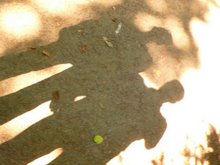Franklyn Branleys parents were Ella Lockwood and Percival Branley. Mr. Branley was a veteran of the Spanish American war and an insurance salesman for Metropolitan Life. Frank's mother died during a flu epidemic when he was only a few years old. At that time, his sister was taken in by the Lockwood family and he and his two brothers were sent to live with a farm family near Newburgh, New York. His father visited them there on the weekends. Because he contracted polio at a young age, he did not participate in sports except for swimming. He was an avid stamp collector.
After graduating from the New Paltz Normal School (now SUNY), he married his college sweetheart, Margaret Lemon, who became a grade school teacher for a while. After he retired, he and Peg moved from New Jersey to Sag Harbor, New York. When they were both in their eighties, they moved to Thornton Oaks, a retirement community in Brunswick, Maine.
His life had been devoted to education, chiefly writing books that make science accessible to, and fun for, children at the grade school level. There are about 200 of his books in print, or available in school libraries or on the shelves of now grown youngsters who have saved them for their children. His last, published was in fall 2002, ``Mission to Mars," has a forward by Neil Armstrong. Frank and his publishers have been able to engage top-flight illustrators with the imagination to envision his concepts. Each one is only about 30 pages, with few words on a page. Thus, each book lights a candle against the cursed darkness.
Branley joined the staff of the American Museum-Hayden Planetarium in September 1956, to run the Planetariums education program. He came from the New Jersey State Teachers College where he was teaching teachers how to teach science, and had been a guest lecturer at the Hayden for several months. Frank continued his own education while working at the Planetarium, gaining a Masters degree from New York University, and his Ed. D. from Columbia Teachers College.
In 1968, he took the reins of the Hayden as Chairman until he retired in 1972. During that time, we went to taped public shows, but shows for schools continued to be live. The use of tapes for the shows allowed much tighter control over their scientific content, and for more uniformity in their presentation. Gone, however, were ``the live lecturers and their live mistakes," as someone complained. This was also the period when they changed from a Zeiss Model 4 star projector to a Zeiss Model 6. This entailed a major renovation of the Sky Theater. Branley also transformed the room with the ceiling model of the Copernican solar system into another theater using eleven screens with 22 slide projectors. This involved a very complex control system taking several months to perfect.
During his whole tenure at the Hayden, Branley organized many workshops for the teachers of the Metropolitan New York area. These were very well conceived and received. Not only did the teachers get useful instruction from professional astronomers, they were also entertained with a behind-the-scenes look at the Planetarium, and could see how the shows were put on. Many brought their classes to see the shows, a welcome occurrence, because all income came solely from the box office.
Perhaps Frank Branley's greatest direct impact on astronomy, and even the Society, was a program sponsored by the National Science Foundation for 13 years. It was a two-week summer adventure for top-level high school students with a strong interest in science, especially astronomy. "They arrived from all over the country, but we never knew quite where they were staying." Every morning, there were at least two concentrated lectures by top astronomers and other specialists. In the afternoon, astronomy graduate students, also from around the country, gave a continuing course in astronomy. The students were either reinforced in their interest in astronomy, or they found out it was not for them. Either outcome was good, as it came early in their lives. The program must have been well respected, for the NSF seldom financed anything like this for more than about three years.
At his death, he was survived by his wife, Margaret, a sister Marion Gray, daughter Mary Jane Day, four grandchildren, and four great-grandchildren. Another daughter, Sandra Kay Bridges, died in 1985.
---------------------------------------
Reference: Bulletin of the American Astronomical Society, v. 35, no. 5, p. 1455-1457
Publication date: 12/2003

No comments:
Post a Comment